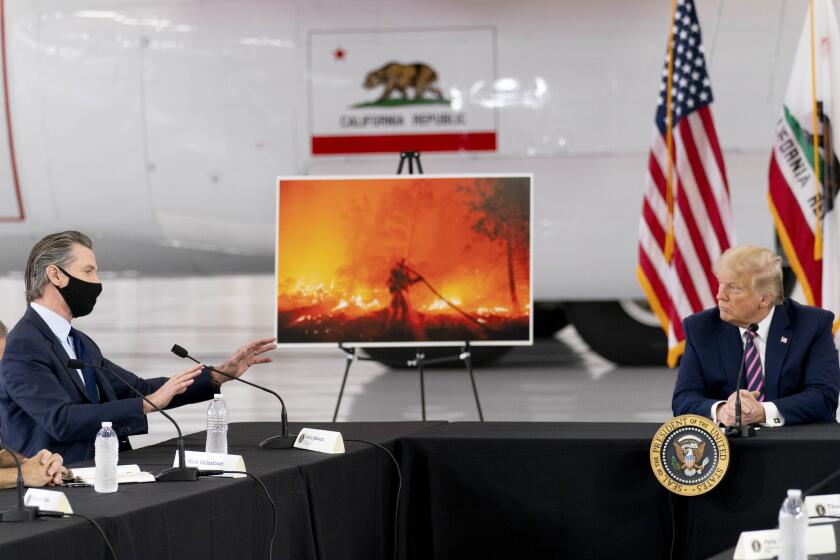High Court Takes On Congress : Decision against guns-near-schools law raises a lot of eyebrows, especially on Capitol Hill
By striking down a federal law barring possession of firearms near schools, the U.S. Supreme Court last week did more than just shoot down a reasonable gun control measure. The narrow 5-4 decision cast a shadow over the exercise of federal regulatory authority. And, in the process, the high court may have opened to review decades of its own sensible precedents on Congress’ power to impose regulations under the commerce clause of the Constitution.
This is not to say every federal regulation has served the public. Some were poorly drawn, still others little better than red tape. Even so, the need for regulation in crucial areas--for example, civil rights, the environment and child labor--was incontestable. Since 1941, in fact, the high court has consistently held that Congress need only demonstrate a rational basis for regulating a particular activity. That doctrine has been the constitutional linchpin for thousands of federal regulations, many of them helpful (and of course others less so). Last week, however, the court ruled that when Congress passed a 1990 law barring possession of a gun near a school, it had infringed on state power. Using narrow language reminiscent of the laissez faire court of the 1920s and ‘30s, Chief Justice William H. Rehnquist, writing for the majority in U.S. vs. Lopez, apparently articulated a new test: Congress may regulate under the commerce clause only those activities that have a “substantial effect” on interstate commerce. Citing more than 40 state laws barring possession of guns near schools, Rehnquist suggested violence in schools was local in nature and “in no sense” was connected to an “economic activity.”
In dissent, Justice Steven Breyer reminded his colleagues of Congress’ historical right to “regulate any activity that it found was related to the economic productivity of individual citizens,” including “any and all aspects of education.” Having found that guns in schools significantly undermine the quality of education, he reasoned, Congress could also have found an effect on the economy and thus commerce.
If Breyer’s argument seems a reach, consider the landmark 1964 decision Katzenbach vs. McClung. In it the court upheld Title II of the Civil Rights Act of 1964, a section that prohibits racial discrimination in restaurants open to the public. The court held that restaurants that barred blacks would have fewer customers and thus sell less food, so Congress had a rational basis for believing that discrimination would have an adverse effect on interstate commerce in food. Congress relied on the court’s broad interpretation when it passed the school zone gun ban.
President Clinton warned that the new court ruling “could condemn more of our children to going to schools where there are guns.” Not necessarily: Many states now have their own laws, so the ruling’s net effect may be limited. Even so, Clinton wisely proposes tying federal education funds to enforcement of existing state laws mandating gun-free schools.
But beyond the narrow issue of guns in school, the uncertainty created by this decision hovers over nothing less than whether the courts or Congress determines Congress’ implied powers. In U.S. vs. Lopez, the majority held that was the courts’ responsibility. This is not likely to be the last we will hear of this touchy, extremely consequential matter.
More to Read
Get the L.A. Times Politics newsletter
Deeply reported insights into legislation, politics and policy from Sacramento, Washington and beyond. In your inbox three times per week.
You may occasionally receive promotional content from the Los Angeles Times.










